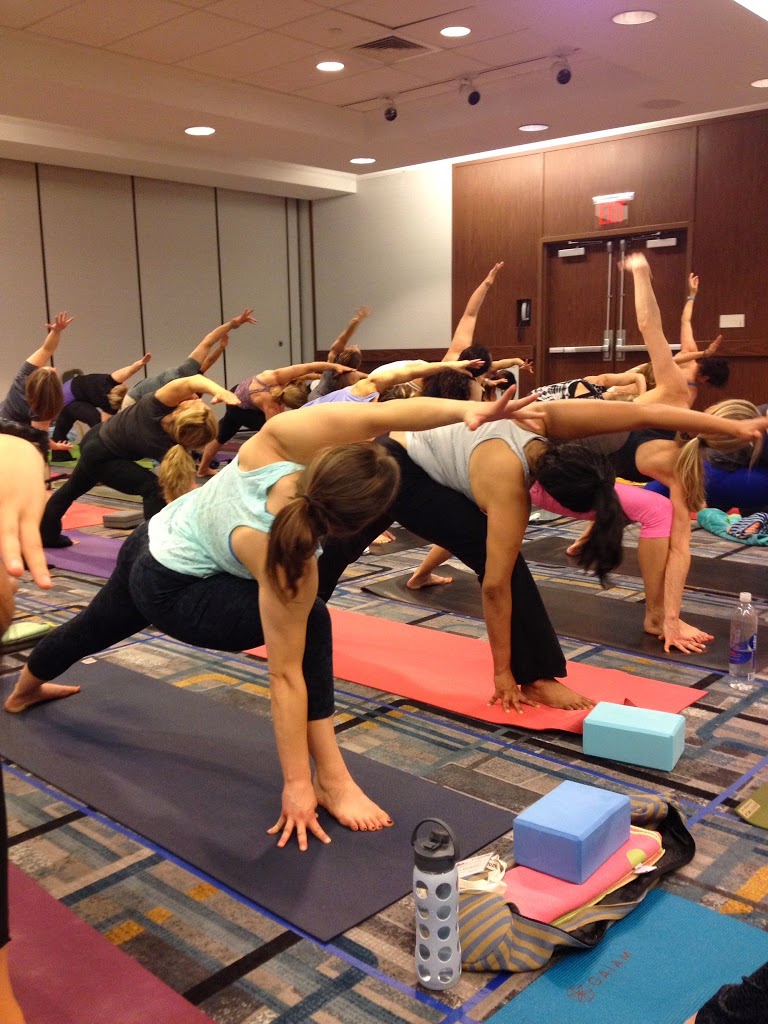 As an Aussie teaching yoga in suburban Mt Waverley, Melbourne for over 13 years, I have wondered for a while what it might be like to get to an international Yoga conference. This year I finally bit the bullet and travelled to New York City for the Yoga Journal conference. I attended full day immersion workshops on the Friday and the Monday, and 2 days of shorter sessions and events on the Saturday and Sunday.
As an Aussie teaching yoga in suburban Mt Waverley, Melbourne for over 13 years, I have wondered for a while what it might be like to get to an international Yoga conference. This year I finally bit the bullet and travelled to New York City for the Yoga Journal conference. I attended full day immersion workshops on the Friday and the Monday, and 2 days of shorter sessions and events on the Saturday and Sunday.What did I learn?
1. Yoga meets you where you are.
Yes even at a conference where nearly everyone is a teacher, you are OK as you are. There is something for everyone, whatever your level of experience, understanding or practice.
2. There is always more to learn.
I am humbled to have been in the presence of some wise and experienced teachers. Those that impressed me most were Sarah Powers, Seane Corn, Rodney Yee, Shiva Rea and Bo Forbes. They were passionate, knowledgeable and amazingly articulate. Of course I couldn’t get to everything on offer, there were usually at least 6 concurrent things going on.
3. I already know plenty.
I spent time with some ‘famous’ yoga teachers. I understood the Sanskrit terms and old concepts that have been handed down from teacher to student over the years. I was fine with the level of anatomy. (I was less interested and familiar with any of the astrological stuff, which really only came in one of the sessions I was at). I realise that I have the essential teachings. And I’m starting to embody them in my life now too.
4. A good understanding of anatomy is important.
But it is definitely not a one size fits all. As teachers we can not feel what another is feeling, but a look at their face will tell us plenty. Work with whichever bodies are in front of you and be prepared to adapt!
5. There is more than one ‘right’ way.
Yes, there are lots of ‘right’ ways to practice asana and yoga. There’s also some ways that are less beneficial, (even though they may be popular).
6. We crave more than active asana.
Whenever Shavasana was suggested, it went down a treat. Sometimes ‘antidote’ contemplations or focussing techniques can help liberate our confusion if ‘just being’ is too difficult. And it was good to see many teachers offering meditation.
7. I’m grateful.
So yes, I actually already knew most of the above. It was reassuring to have many of my current practices and teaching methods affirmed within an international context. Highlighted for me is how grateful I am to have received my major teaching and influence from Swami Shantananda at the Australian College of Classical Yoga. Thank you Mataji from the bottom of my heart. It was lovely to come home to Satsang with the classical yoga community. And thanks also to my wonderful yoga students that have taught me so much over the years!
8. Don’t put up a picture of yourself on the cover of Yoga Journal on Facebook or everyone will believe it!
It seemed like a fun thing to do at the time … I am humbled that many people thought it was believable!
Visit our website: http://www.waverleyyoga.com.au/
Find us on Facebook: https://www.facebook.com/WaverleyYoga
Twitter: https://twitter.com/waverleyyoga